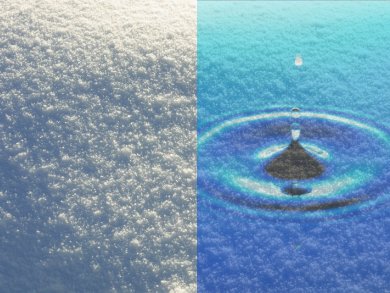Researchers at the CNRS (National Center of Scientific Research) in Paris, France, and their colleagues in the US have investigated how talc surfaces can be both hydrophilic and hydrophobic. Individual water molecules adsorb strongly on talc but a droplet of water will bead up on the same surface.
The explanation lies in the competition between adhesion and the favorable entropy of being in the vapor phase under low humidity conditions, the team says. The discovery could have implications for zeolite chemistry and hints that the interior of porous hydrophobic zeolites suspended in water might contain adsorbed water molecules.
- Molecular Explanation for Why Talc Surfaces Can Be Both Hydrophilic and Hydrophobic
B. Rotenberg, A. J. Patel, D. Chandler,
J. Am. Chem. Soc. 2011.
DOI: 10.1021/ja208687a



